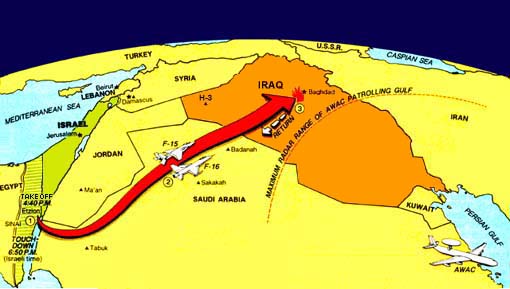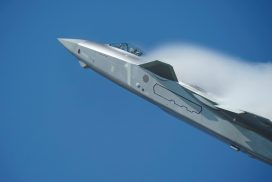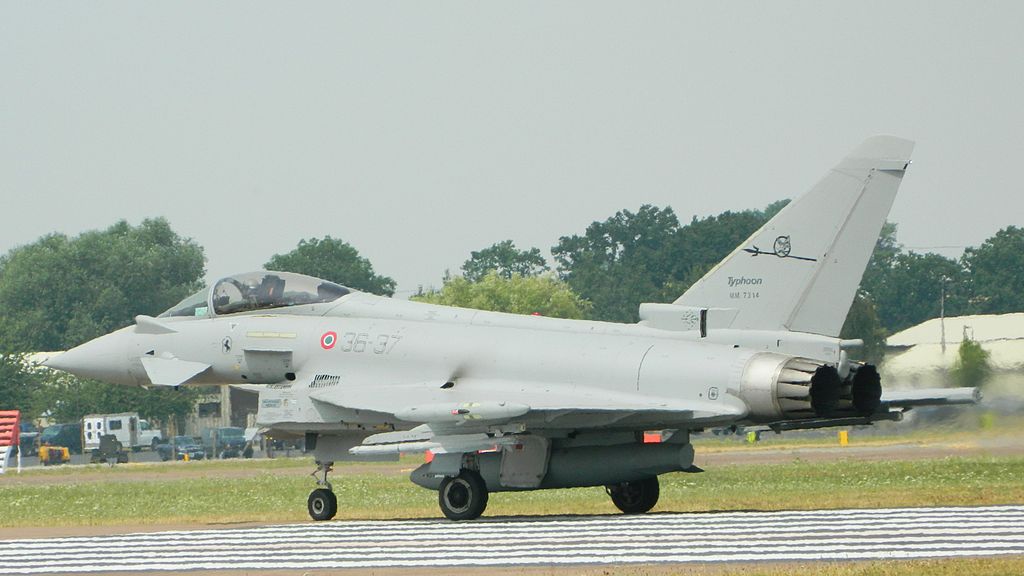Operation Opera was a 1981 surprise Israeli air strike that destroyed the Iraqi nuclear reactor under construction in Osirak. While the attack, codenamed “Operation Opera,” surprised the Iraqis and the rest of the world, it had long been in planning. It was only after the failure on the diplomatic front, and the consultation of military and intelligence experts with Prime Minister Menachem Begin’s cabinet, that Israel chose to go ahead with the attack on the Iraqi reactor.
By the end of the seventies, Iraq purchased an “Osiris” class nuclear reactor from France. Israel’s intelligence assumed this was a step taken by Iraq to produce Plutonium for an atomic bomb.
According to Israeli intelligence, the summer of 1981 would be the last chance to operate against the reactor, without putting the population of Iraq in danger of nuclear fallout, since at this stage the reactor wasn’t operational and not loaded with it’s nuclear fuel.
Operation Opera was carefully planned to minimize the loss of lives of any foreign workers and the late-afternoon attack was designed so as to provide the Israeli Combat Search and Rescue Team (CSAR) all night to search for any downed Israeli pilots.
An Israeli Air Force flight of 8 F-16As (aircraft 107, 113, 118, 129, from 117 Squadron and 239, 240, 243 and 249 from 110 Squadron) was outfitted, each with two unguided Mark-84 2000-pound delay-action bombs, and external fuel tanks. A squadron of 6 F-15As was also assigned to the operation to provide fighter support for the F-16As.
On June 7, 1981 at 15:55 local time (12:55 GMT) the plan was set in motion. The task force left Etzion Airbase, flying at 240 m unchallenged over Jordanian and Saudi airspace.
On the initial flight southward, the planes coincidentally flew directly over King Hussein’s private yacht at 100 feet in elevation. Hussein recognized the Israeli markings and reportedly realized instantly what their mission was, and attempted unsuccessfully to alert the Iraqis.
At 1,000 km into their flight, the operation was complicated by the F-16As external fuel tanks. The planes were so heavily loaded that the external tanks were exhausted while the task force was still en route to the Osirak facility. These tanks were designed to be jettisoned, but not to be jettisoned while the plane was still loaded with the Mark 84 bombs; there was a possibility that the tanks could become entangled in the weapon mounts once released. However, this did not occur, and the squadron of F-16As managed to safely jettison their empty external tanks over the Saudi desert.
Upon reaching Iraqi airspace, the squadron split up, with two of the F-15s forming close escort to the F-16 squadron, and the remaining F-15s dispersing into Iraqi airspace as a diversion and ready back-up.
The attack squadron descended to 30 m over the Iraqi desert, attempting to fly under the radar of the Iraqi defenses.
At 18:35 local time (17:35 Israeli time/14:35 GMT), 20 km from the Osirak reactor complex, the F-16 formation climbed to 2,100 m and went into a 35-degree dive at 1,100 km/h, aimed at the reactor complex. At 1,100 m, the F-16s began releasing the Mark 84 bombs in pairs, at 5-second intervals. According to the Israeli reports, all sixteen weapons struck the reactor complex, although two apparently did not detonate. As the anti-aircraft defenses opened fire, the squadron climbed to an altitude of 12,200 m and started to return to Israel. According to Israeli reports, the Iraqi defenses were caught off guard, and were slow to react. In any case, the anti-aircraft defenses of the facility did not manage to damage any of the attacking squadron.
Despite the fears of encountering Iraqi interceptors, the squadron remained unchallenged, and returned to Israeli airspace on the reciprocal route




